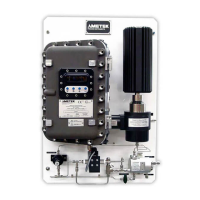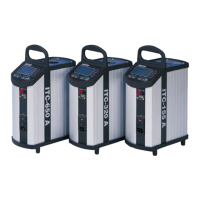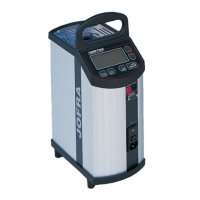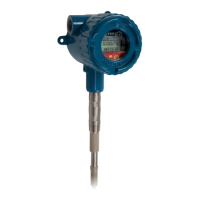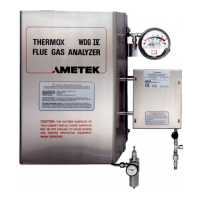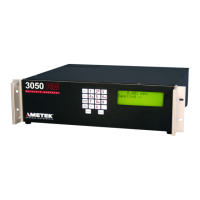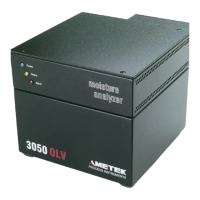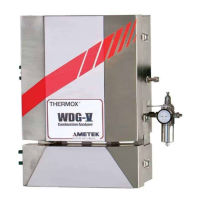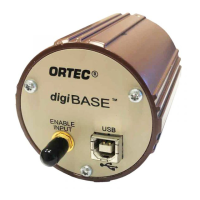Essential Health & Safety Requirements | 45
If any alarms exist, take appropriate action to correct the alarms before
continuing. For more information about alarms and corrective action
to take to correct and reset alarms, refer to “Alarm Conditions and Cor-
rective Action” in Chapter 5.
If no alarms exist (Figure 12), or after all alarm conditions have been
cleared (reset), recheck the temperature of each zone from the
STATUS screen.
Compare the values to the values recorded earlier to ensure they have
increased, have reached their normal operating temperatures, and
have stabilized.
Figure 11.
Active alarms displayed
(example), Current
Alarms screen.
Cell Temperature
Heater Temperature
HOME ALARMS STATUS SETUP
Figure 12.
No active alarms,
Current Alarms screen.
No alarms
HOME ALARMS STATUS SETUP
Normal operating temperatures are values that are within 5 °C (typical;
set point may vary) of the Set Point values.
13. Open the Vent Line isolation valve (on the Sample Probe, process tap,
or inside the Oven/Sample System Enclosure). Open the Sample Line
isolation valve (on the Sample Probe, process tap, or inside the Oven/
Sample System Enclosure) to allow sample fluid into the sample sys-
tem.
14. Zero the analyzer as described under “Manually Zeroing the Analyzer
Sample System,” later in this chapter. After the Zero, switch the ana-
lyzer back to Measure mode (from the Calibration screen, select Start
Measure and press ENTER). From the HOME screen (Figure 13), check
the response time of the analytes. Typically, a good response time is
less than 30 seconds to T90 when the sample system is clean and oper-
ating at peak efficiency. Response time may vary due to Sample Line
length.
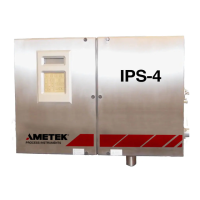
